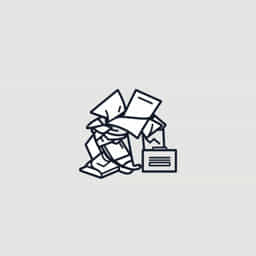Every now and then, a word catches our attention not only for its meaning but also for how it’s used. One such word is unkempt. You might have heard it used to describe someone’s hair, appearance, or even surroundings. But as common as the word might be in speech or writing, some may wonder about its grammatical role in English. Is ‘unkempt’ a verb? Or does it belong to another part of speech? Understanding the structure and function of words like unkempt helps improve both your vocabulary and your writing precision. Let’s explore its usage, origin, and grammatical role in detail.
Understanding the Nature of Unkempt
What Does Unkempt Mean?
The word unkempt is most often used to describe something or someone that appears messy, untidy, or disheveled. For example, you might say He arrived with unkempt hair, or The garden looked unkempt after months of neglect. This word carries a visual and somewhat negative connotation, suggesting a lack of care or grooming.
Is Unkempt a Verb?
No, unkempt is not a verb. Grammatically, it functions as an adjective. Adjectives are words that describe or modify nouns. In the sentence Her room was unkempt, the word unkempt is describing the noun room. It is not an action, but rather a descriptor of a condition or appearance.
Grammatical Role of Unkempt
Used as an Adjective
In English grammar, an adjective modifies or qualifies a noun by giving more information about it. Unkempt fits this role perfectly. Here are a few examples to illustrate how unkempt operates as an adjective:
- The professor’s unkempt beard gave him a wild look.
- After the long journey, their clothes were wrinkled and unkempt.
- The abandoned building had an unkempt yard full of weeds.
In all of these examples, unkempt enhances the noun by describing its messy or disorderly state.
What It’s Not: A Verb
Verbs, on the other hand, describe actions, states, or occurrences. Words like run, think, or create are verbs. If unkempt were a verb, you might expect sentences like He unkempt his hair, which would sound incorrect and unnatural in English. There is no verb form of unkempt in standard usage.
Origin and Etymology of Unkempt
Tracing Its Roots
The word unkempt has an interesting linguistic background. It derives from Middle English and originally was a past participle of the verb kemben, which meant to comb. The prefix un- was added to mean not combed, hence unkempt. Over time, the word lost its verbal roots and solidified its place as an adjective in modern English.
From Literal to Figurative
Initially, unkempt might have referred specifically to hair that was not combed. But its usage has broadened. Today, it can describe anything that appears messy or neglected whether it’s a physical space, a person, or even ideas.
Common Usage in Modern English
Describing Appearance
One of the most common uses of unkempt is in describing someone’s physical appearance, particularly hair, clothing, or hygiene. For instance:
- He always looked a bit unkempt, as though he had just rolled out of bed.
- Her unkempt clothes suggested she hadn’t had time to prepare properly.
Describing Places or Objects
Besides people, unkempt is often used to describe places that are untidy or neglected:
- The park had become unkempt during the off-season, with trash scattered everywhere.
- The bookshelf was covered in dust and looked quite unkempt.
Less Common Figurative Uses
Occasionally, unkempt may be used in a more abstract or figurative sense, though this is less common. For example, someone might refer to unkempt thoughts or unkempt writing to suggest disorganized or chaotic mental or creative work. While these uses are stylistic and poetic, they still function as adjectives.
Similar Words and Their Functions
Other Adjectives for Untidiness
If you’re writing and want to vary your language, consider using synonyms or related adjectives. Some options include:
- Disheveled
- Messy
- Scruffy
- Sloppy
- Neglected
Each of these words has a slightly different nuance, but all are adjectives like unkempt. They help paint a clear picture of disorder or lack of care.
Contrast with Verbs
To clarify further, here are some verbs that relate to tidiness and care actions, not descriptions:
- Clean
- Organize
- Groom
- Trim
- Straighten
None of these are interchangeable with unkempt, because unkempt is not an action but a state or condition.
Why Knowing the Part of Speech Matters
Clarity in Communication
Understanding whether a word like unkempt is a verb or adjective helps avoid misuse in both speaking and writing. Misplacing parts of speech can make your sentences unclear or grammatically incorrect. Knowing that unkempt is an adjective allows you to place it correctly before or after a noun, depending on the sentence structure.
Better Vocabulary Skills
Learning the function of words not only strengthens grammar but also improves your overall vocabulary. You become more confident using precise and expressive language, especially in descriptive writing or formal communication.
To answer the question clearly and definitively: no, unkempt is not a verb. It is an adjective used to describe people, places, or things that are messy, disorderly, or neglected in appearance. It cannot be used to express an action or state in the way verbs can. Its roots may lie in a verb form from Middle English, but today it functions solely as a descriptive word. Understanding its usage helps in forming grammatically correct and effective sentences, whether you’re writing a story, describing a scene, or analyzing someone’s appearance. For anyone looking to enhance their English skills, distinguishing between parts of speech like this is both useful and necessary.
